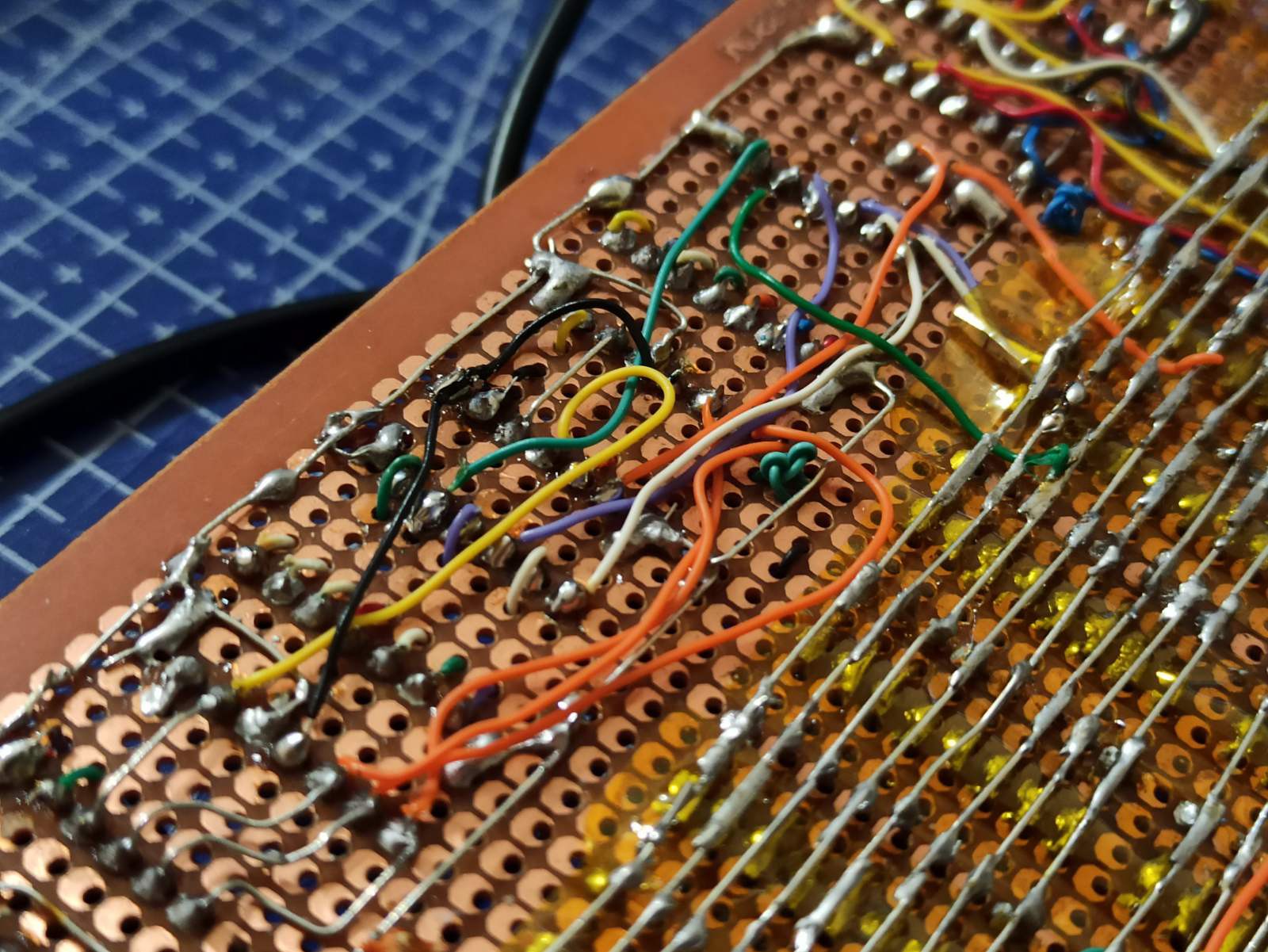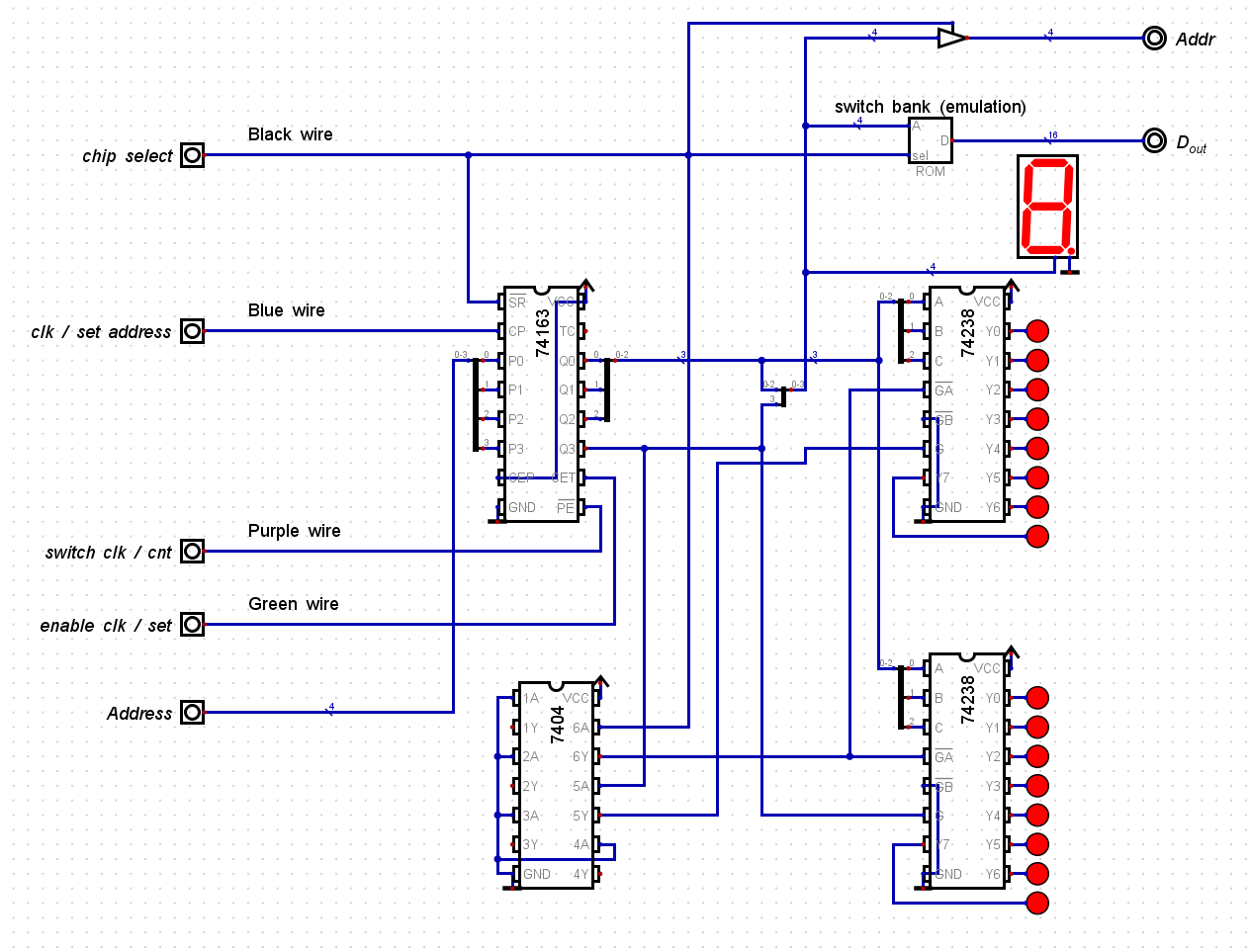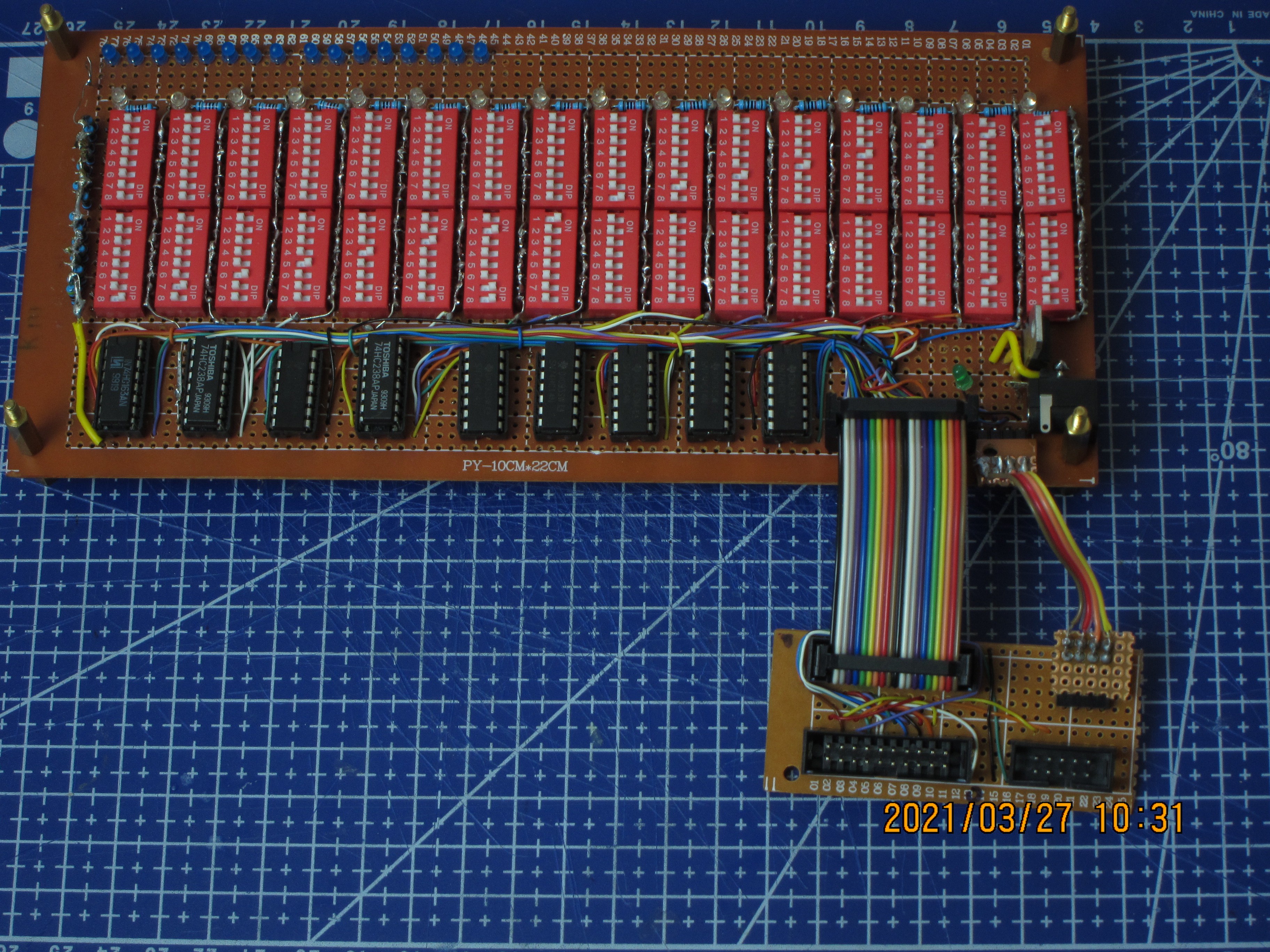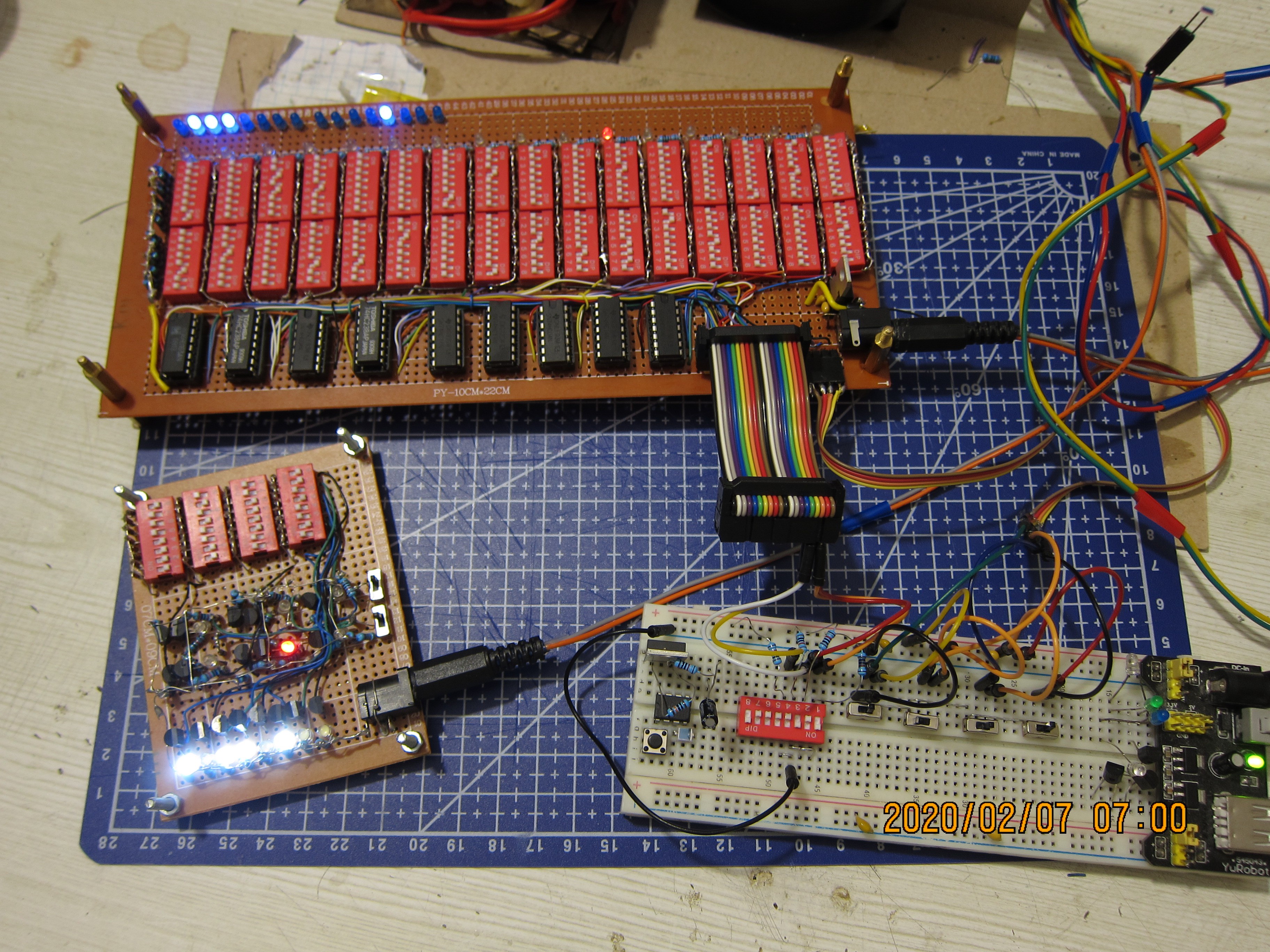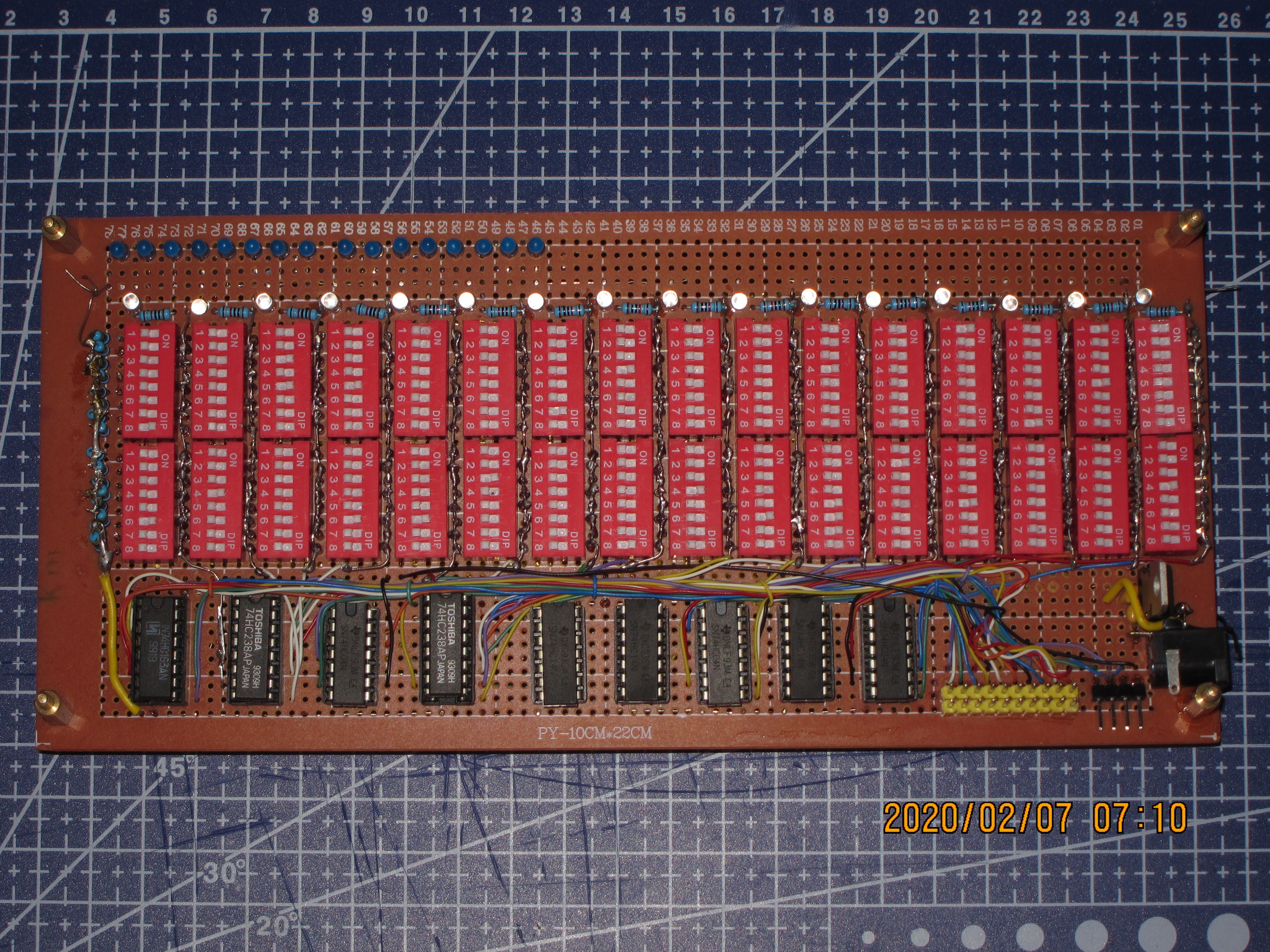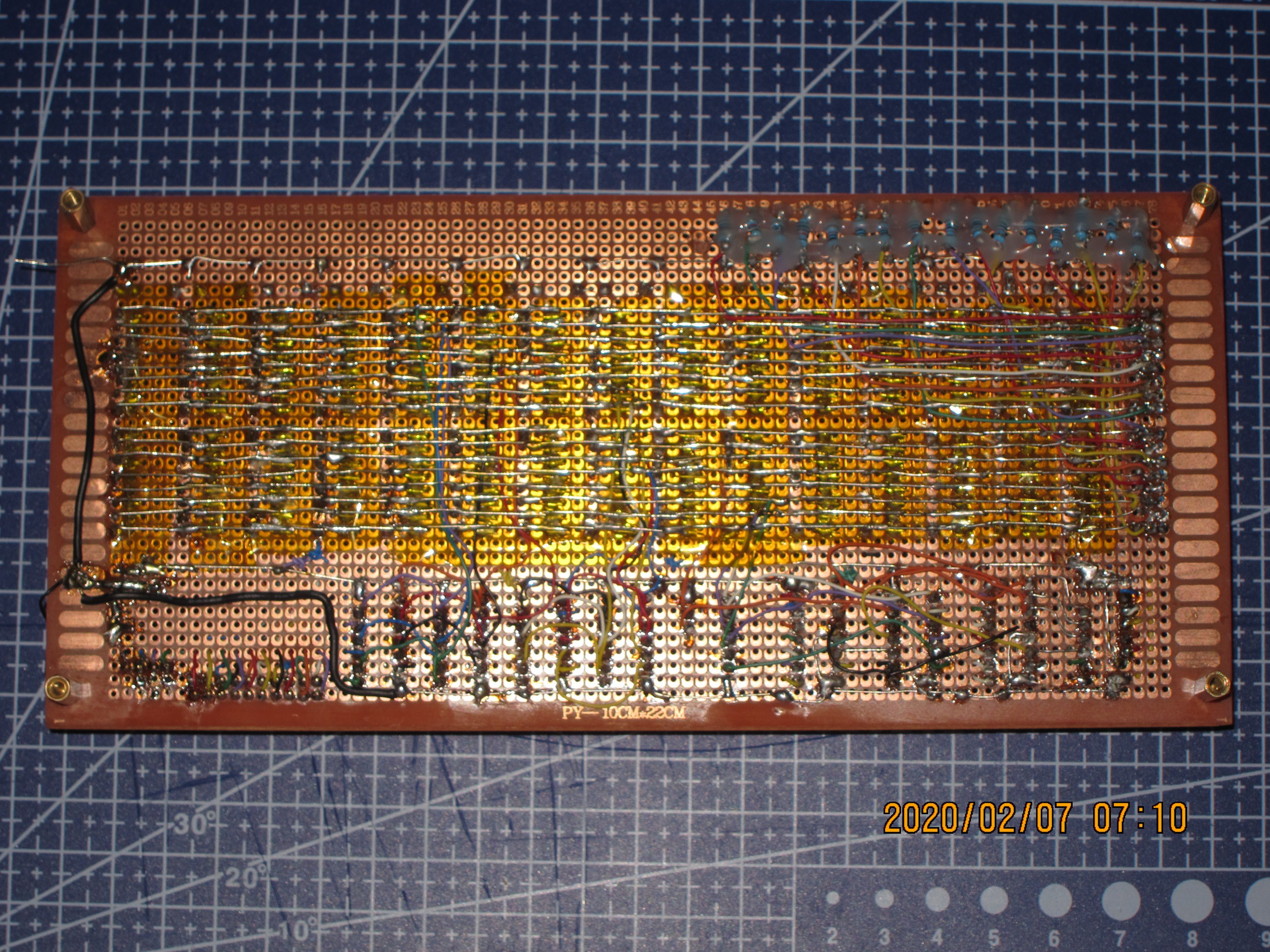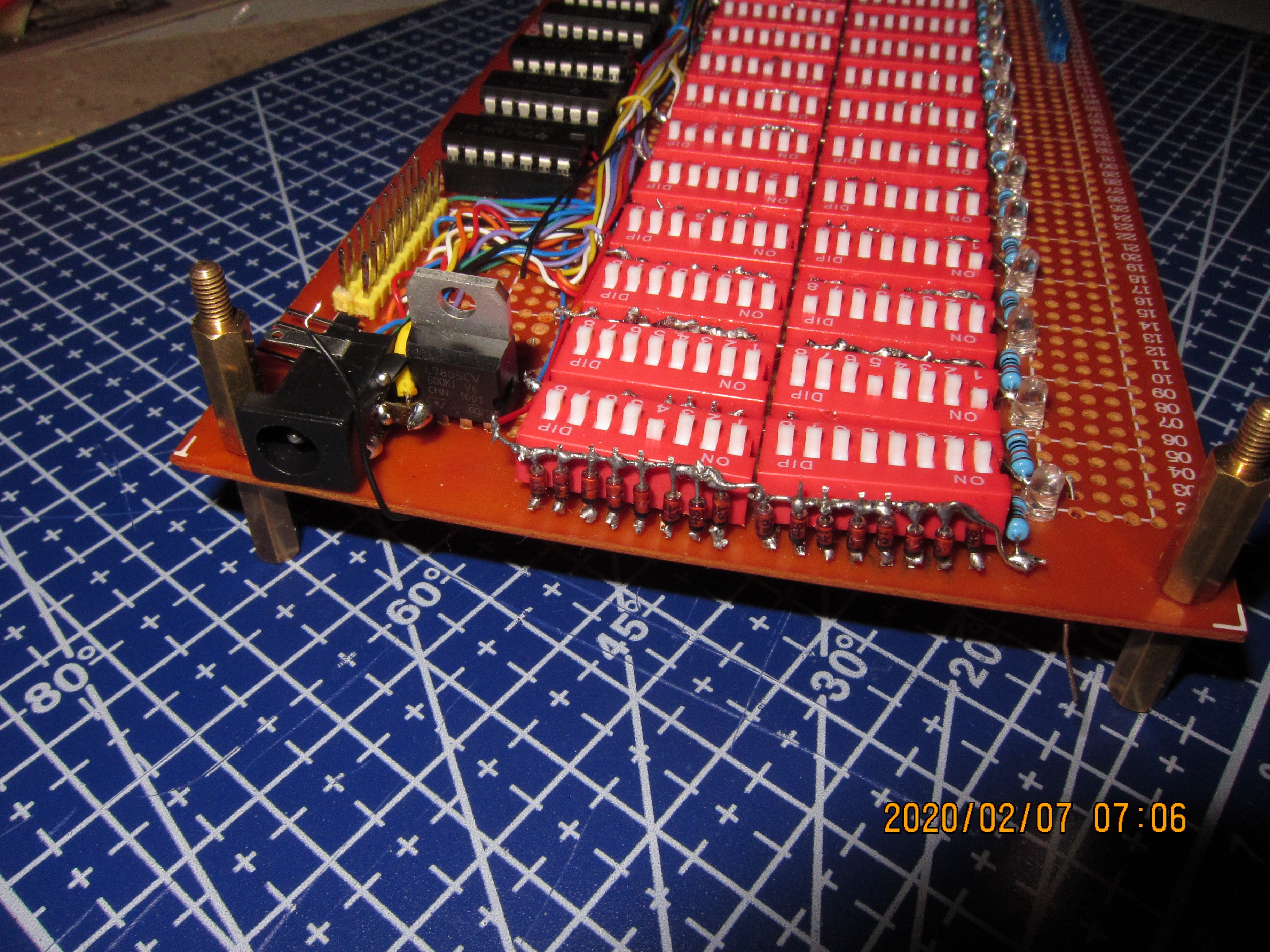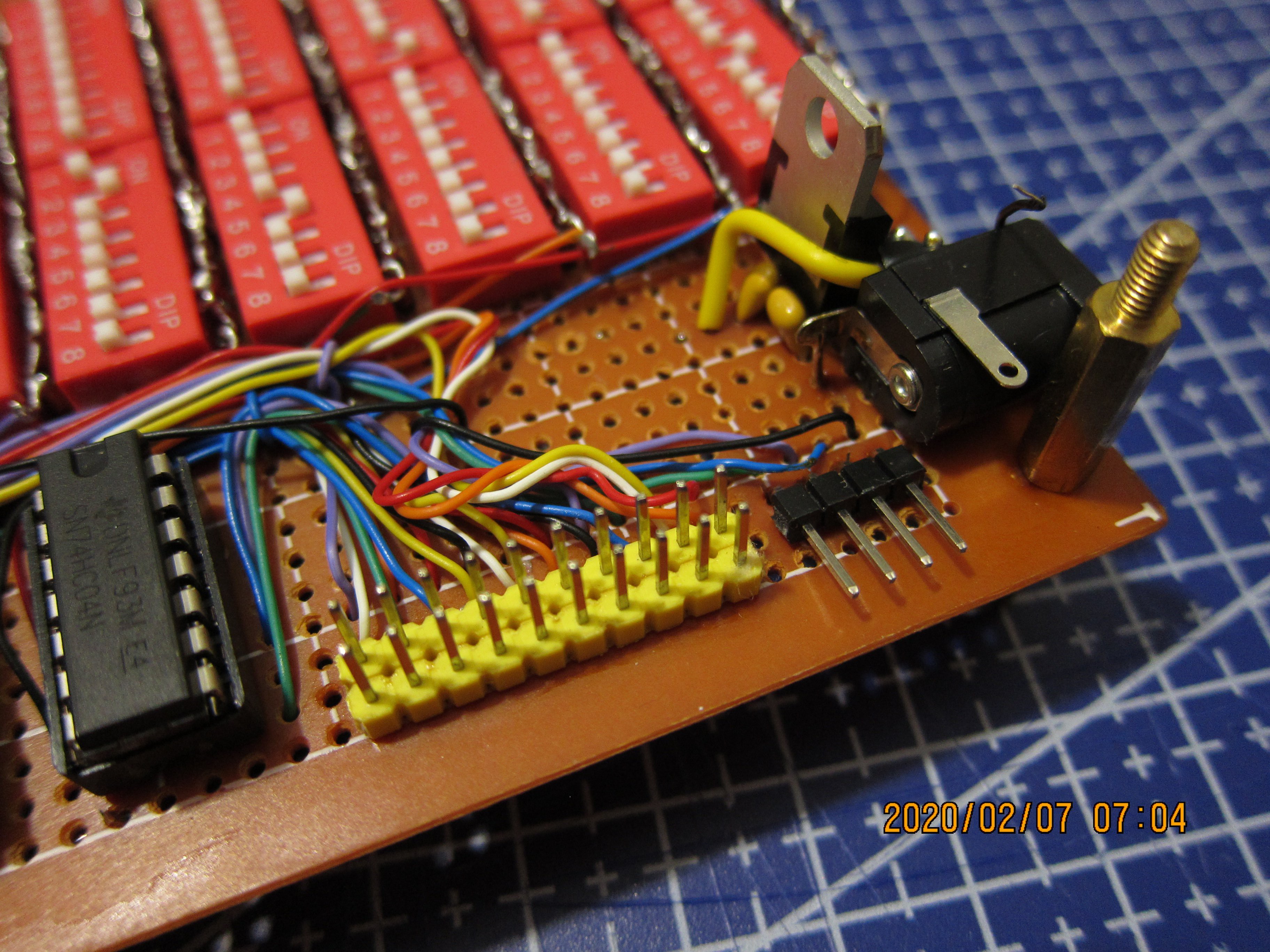-
Circuit repair and adjustment
01/06/2022 at 16:15 • 0 commentsAs I integrated the ROM into my ECM-16/TTL Pilot-1 cpu, I've encountered a couple of problems:
- there is an intermittent short circuit developing on data bit A line, which makes it stuck to HIGH no matter the actual switch position
- on address E it seems to be no output
- reset signal is not fully implemented, so the address counter won't clear to zero.
The first two of the above problems were solved by soldering some wires that came loose - as they are quite exposed, they are fairly delicate and were not able to handle stresses of me moving/transporting the board around.
The reset was implemented by small adjustment of board's wiring.
Here is the board's back, and it is visible that its wiring is fairly fragile in places. I intend to apply epoxy to this side of board to make it sturdier and less prone to damage. The downside is that if something happens to the board after that, it would be next to impossible to repair it.
![]()
Here is the schematic/model of this ROM module I use in my simulations:
![]()
In actual board, the pair of 74hc238 3-to-8 decoders drives address lines of switch bank, activating a single word to the data bus.
-
Small interface board
03/26/2021 at 09:27 • 0 commentsMade a passive board that makes this ROM compatible with the connection "standard" I came up with for the rest of my CPU.
Overview of the new board connected to the ROM board:
![]()
And here is detailed view of the small board with all pins labelled for future reference:
![]()
-
Full-fledged ROM is made
02/07/2020 at 05:43 • 0 commentsOver a last couple of moths I constructed a ROM unit, which may be useful in further development of my computer project.
The unit is composed of 256 switches and 256 associated diodes, has 2 3-to-8 74hc238 decoders combined so they act as single 4-to-16 decoder, output buffer for each of 16 data bits (Schmidt invertor combined with regular one), and, as a bonus, the board also contains 74hc163 4-bit synchronous counter. With this arrangement, two ways of addressing are implemented.
1: one can just send an address, and after first rising clock edge the addressed data will be on outputs.
2: addresses can be auto-incremented, and new sequential data word will appear on each rising clock edge.
There are, as some useful extra, also LEDs, which show which word is chosen, and what data it contains.
Below are photos of the board:
In action, with the prototype as comparison:
Several views:
256-bit Programmable ROM
ROM module, made from switch banks, diodes, handful of TTL chips; organized as 16 words of 16 bits each
 Pavel
Pavel